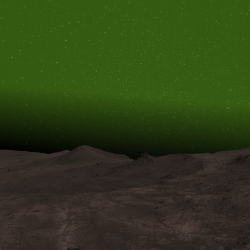Observational & model data on BIRA-IASB sites
Stratospheric modelling focuses on the study of the ozone layer and its interaction with climate change. This is done with the Belgian Assimilation System for Chemical ObsErvations (BASCOE).
Bottom-up and satellite-based emissions of major pollutants developed by the Tropospheric Chemistry Group
Mineral dust data and atmospheric CH4 concentrations measured with the Infrared Atmospheric Sounding Interferometer (IASI) onboard the MetOp sounder.
Regional, global chemical-transport models, partial derivatives of model/data biases with respect to input variables, vapor pressure models,...
GEM-Mars, a 3D general circulation model for the Mars atmosphere, describes meteorology, circulation, dust, clouds, water, polar caps, radiation, and atmospheric chemistry from the surface up to 170 km altitude.
Data viewer, availability and monitoring tools of the network of radio receiving stations using forward scattering techniques to study the meteoroid population.
H2CO columns derived from GOME, SCIAMACHY, GOME-2 and OMI observations using a DOAS technique combined with radiative transfer calculations, using IMAGES chemical-transport model.
Interdisciplinary theoretical studies and numerical simulations related to the plasmasphere, plasmaspheric wind and the plasmapause.
Measurements from the VLF antenna in Belgium and Antarctica compared with density in-situ observations made by the Cluster satellites.
Earth's magnetosphere observations from the Whisper experiment, on each of the four identical Cluster II satellites.
SPENVIS, an engineering operational software, provides a web-based interface for assessing the space environment and its effects on spacecraft systems and crews.
Cross-platform application which performs DOAS retrievals of trace gases from spectral measurements (satellite, ground-based, mobile or aircraft-based instruments).
CO2, CH4, C2H6, CO, H20, HCl, HCN, HDO, HF, HNO3, N2O, NO2, O3 measured by our FTIR and in-situ analyzers. Data from TCCON, NDACC and ICOS networks.
Compact and modular ionizing particle spectrometer that performs direct electron and heavy ion discrimination, used to complete empirical dynamic models of space radiation.
Routine operations validation service for TROPOMI (TROPOspheric Monitoring Instrument) on Sentinel-5P satellite. Data products about the global distribution of atmospheric trace gases and aerosols.
Operating and improving data analysis and modelling systems for stratospheric ozone, with respect to independent data in the framework of the Copernicus Atmosphere Monitoring Service (CAMS).
Belgian air quality as seen from Low-Earth (LEO) and Geostationary Observations (GEO) Copernicus Atmospheric Sentinel missions to support policies.
Support to observation sites to provide quality measurement data more rapidly to NDACC so that it becomes available for CAMS model validation. Evaluation and quality assurance reports, and up-to-data comparisons.
Bromine monoxide (BrO) is a key trace species in the ozone chemistry because of its large efficiency as catalyst of ozone destruction. Analysis of GOME and SCIAMACHY data.
Atmospheric composition monitoring assessment activities for GOME-2 and IASI minor trace gases on METOP plaforms (NO2, BrO, HCHO, SO2, glyoxal, CO, HNO3 and OClO).
SO2 data related to volcano eruptions from measurements by satellite instruments, provided in near-real time thanks to the Support to Aviation Control Service (SACS).
Independent, fully characterized, and traceable ground measurements reference data sets that play a crucial role in the validation of atmospheric composition satellite missions (air quality observations).
Global maps showing the averaged trace gas vertical columns (formaldehyde, glyoxal, nitrogen dioxide, sulphur dioxide, carbon monoxide, methane) over almost the entire TROPOMI mission.
Improved and new climate data records (synthesis of related observations) from ESA satellite instruments for the four essential climate variables of ozone, aerosol, water vapour and temperature.
The international research initiative LOTUS focuses on updating and refining stratospheric ozone trend analyses in time for the 2018 WMO/UNEP Scientific Assessment of Ozone Depletion.
Data portal of the RoadMap project that improves the understanding of physical processes in the Mars atmosphere using laboratory experiments, and based on space observations, improves the modelling of the Mars dust and water cycles.
NOMAD is one of four scientific instruments orbiting Mars, onboard a satellite called the ExoMars Trace Gas Orbiter.
The Virtual European Solar and Planetary Access (VESPA), a virtual observatory for planetary science, connects data, allowing for rapid data search and provides modern tools to retrieve, cross-correlate, and display data and results of scientific analyses.

